Le Vietnam est unique: si tu cherches des aventures incroyables, une sensation de liberté totale, une gastronomie succulente, un peuple accueillant et une histoire passionnante, ce pays est ta prochaine destination.
Aujourd’hui, le Vietnam est devenu une des destinations touristiques les plus populaires d’Asie du sud-est, mais son immensité offre encore une multitude d’opportunités pour le visiter en sortant des sentiers battus.
De nombreux backpackeurs y voyagent à moto, ce qui permet de vraiment sortir des zones touristiques et de voyager à son propre rythme.
C’est le moyen de transport que j’ai utilisé au cours de mes 2 derniers voyages en 2013 et 2017. J’y ai passé 6 semaines en tout et je compte bien y retourner.
Tu souhaites partir à la découverte du Vietnam avec un minimum de renseignements. Tu trouveras dans cet article les informations et les conseils qui te permettront de préparer ton voyage en sac à dos au Vietnam.
Sommaire
- 1 Faut il un visa ?
- 2 Combien coûte le vol ?
- 3 Quel type de vol dois je acheter ?
- 4 Comment quitter l’aéroport ?
- 5 Quelle est la monnaie ?
- 6 Quelle langue parle-t-on ?
- 7 Quels vaccins dois je faire ?
- 8 Est ce un pays sûr ?
- 9 Où puis-je loger ?
- 10 As-tu des hôtels à recommander ?
- 11 Quels sont les moyens de transports?
- 12 Pourquoi voyager à moto ?
- 13 Où me nourrir ?
- 14 Où retirer de l’argent ?
- 15 Dois-je acheter une carte sim ?
- 16 Quelles applications installer sur mon smartphone ?
- 17 Que contenait ton sac ?
- 18 Peut-on voyager avec un budget routard ?
- 19 Que faut-il emmener au Vietnam ?
- 20 Quelles sont les phrases de bases à connaître ?
- 21 Quelle est la meilleure période pour visiter le Vietnam ?
- 22 Quelle assurance voyage ?
Faut il un visa ?
Pour un séjour de moins de 15 jours en entrée simple, aucun visa n’est nécessaire pour les français.
Au-delà de cette durée, tu as 3 options
Le visa obtenu avant le voyage, à l’ambassade de France,
le visa on arrival, obtenu sur place via une lettre d’invitation commandée sur internet
et le e-visa.
| Validité du Visa | A l’ambassade du Vietnam à Paris | En ligne |
|---|---|---|
| 1 mois / 1 entrée | 85 € | 12 $+25 $= 37 $ |
| 1 mois / entrées multiples | 115 € | 28 $+50 $= 78 $ |
| 3 mois / 1 entrée | 115 € | 15 $+25 $= 40 $ |
| 3 mois / entrées multiples | 165 € | 38 $+50 $= 88 $ |
Le visa à l’arrivée (on arrival), option déconseillée par l’ambassade, déconseillée sur le net… option que j’ai adoptée en 2013. Je l’ai obtenu en 20 minutes et il m’a couté 37 $.
Effectue la demande sur le site: http://vietnamvisa.org/ . Il t’en coûtera 12 $, tu recevras une lettre d’invitation par mail. Une fois arrivé au Vietnam, tu remettras cette lettre au douanier, et le visa te sera délivré en 20 minutes pour 25 $ . Le visa te coûtera au total 37 $.
Si comme moi, tu fais escale à Saïgon pour rejoindre Hanoï, le visa se fait en arrivant à Saïgon. En effet les vols intérieurs partent d’un autre terminal. Il est nécessaire de passer la douane pour prendre ta correspondance.
Il faut compter 20 min pour l’obtention du visa. Si ton bagage est en soute, contrairement à ce qui est dit en France, il faut le récupérer. Ensuite même si tu n’as pas de bagage en soute, tu devras t’enregistrer au comptoir, compte encore 20 minutes. Enfin tu auras besoin de 20 minutes supplémentaires pour passer les contrôles de sécurité.
Mon escale durait 1h30, j’ai pu tout enchaîner sans problème, tout est bien indiqué et le personnel est très serviable.
L’e-visa vietnamien existe depuis le 1er février 2017 pour les français. Mais il présente plusieurs limitations:
- Valable 1 mois
- Pas multi entrée
- Impossible à éténdre
- Il n’est accepté qu’à certains postes frontières.
Tu peux l’obtenir sur : https://www.xuatnhapcanh.gov.vn/
Combien coûte le vol ?
Le Vietnam n’est pas une destination chère.
2013, j’ai payé mon vol Paris- Hanoï/ Ho Chi Minh-Paris, 650 € avec Air France.
2017, j’ai payé mon aller-retour Paris/ Ho Chi Minh, 591 € avec Qatar Airways.
Si tu réserves suffisamment à l’avance, tu pourras trouver des vols à moins de 500€.
Air China est la compagnie la moins chère, mais les escales sont très longues.
Qatar Airways et Emirates offrent des bons rapports qualité-prix avec des escales courtes.
Air France et Vietnam Airlines (membre de Skyteam) proposent des vols directs bons marchés: les vols sont même parfois moins chers que les vols avec escales.
Pour plus d’infos sur le sujet, je te conseille de lire mon article sur comment trouver un billet d’avion pas cher, en moins de 40 minutes.
Quel type de vol dois je acheter ?
Le Vietnam est un pays étendu, qui dispose de plusieurs aéroports internationaux, les 2 principaux sont à Hanoï et Ho Chi Minh.
Ce qui te laisse le choix entre 2 possibilités :
L’aller-retour simple: tu arrives et tu repars du même aéroport . Ensuite, tu peux t’arranger avec les vols régionaux si à la fin de ton voyage tu te trouves loin de ton point de départ.
Le vol multi-destinations: tu arrives et tu repars de 2 aéroports différents. Ce qui te permet de faire un itinéraire sans avoir besoin de revenir à ton point de départ.
Le vol multi-destination est une bonne solution si tu veux traverser le Vietnam.
C’est très simple à trouver et pas plus cher qu’un vol classique.
Va sur Skyscanner, coche la case Multi-destinations et indique les aéroports souhaités.
Une fois les résultats obtenus, tu n’as plus qu’a utiliser les filtres pour trouver le vol qui correspond à tes critères de budget et de confort.
Si tu n’es pas sur de ton itinéraire ou que tu souhaites partir et arriver du même aéroport, sache que les vols internes sont très bon marché. Tu peux traverser le pays pour moins de 20€ avec http://www.vietjetair.com/.
Si tu trouves des vols peu cher pour Kuala Lumpur, cette compagnie peut te proposer des promotions avec des vols de Kuala Lumpur vers Ho Chi Minh pour moins de 10€.
Comment quitter l’aéroport ?
A Saïgon
L’aéroport Tan Son Nhat se situe à 8 km du centre ville, tu as plusieurs solutions pour le quitter.
En bus:
Depuis Mars 2016, il existe une nouvelle ligne de bus entre aéroport et le quartier backpacker dePham Ngu Lao. Ce bus jaune, de la ligne 109 est disponible entre 5H30 du matin et 1H00 du matin.
Le prix est de 20 000 VND, sans extra pour les bagages.
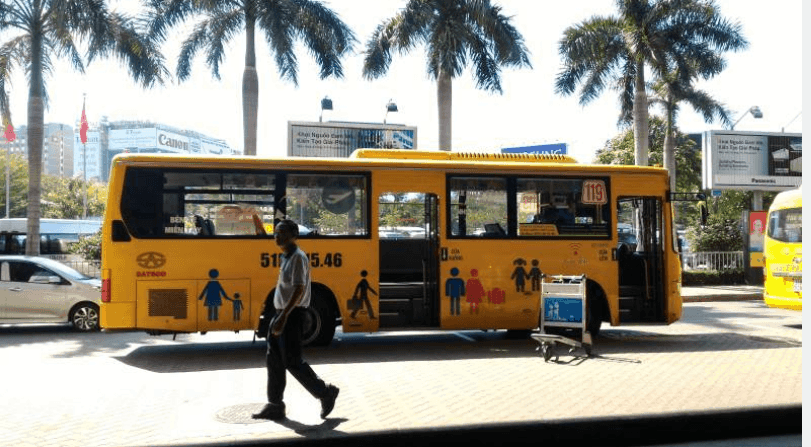
Tu trouveras ce bus à la sortie du terminal des arrivées.
En taxi:
Si tu préfères prendre le taxi, le prix d’une course jusqu’à Pham Ngu Lao est entre 150 000VND et 200 000 VND.
A Hanoï:
L’aéroport international de Noi Bai se trouve à 45 km d’Hanoï, tu as plusieurs solutions pour le quitter.
Le Bus:
Les bus 07 et 17 sont disponibles de 5 heures à 22 heures.
Le trajet te coûtera 7 000 VND et prendra environ une heure.
Tu trouveras ce bus à la sortie du terminal des arrivées.
Le taxi:
Si tu préfères le taxi, la course te coûtera environ 350 000 VND pour aller dans le vieux quartier de Hanoi.
Tu en auras pour 40 minutes, utilise un taxi officiel ou un uber.
Quelle est la monnaie ?
La monnaie au Vietnam est le Dong.
1 €= 28 000 Dongs.
Tu peux en retirer partout. À savoir que dans les distributeurs ATM, tu ne peux retirer plus de 2 millions de Dongs en une fois. Cependant tu peux retirer autant de fois que tu veux dans le même distributeur.
À chaque retrait la banque dans laquelle tu retires tes sous, ainsi que ta banque en France, te prennent une commission.
Quelle langue parle-t-on ?
La langue officielle est le vietnamien. L’anglais, même dans les auberges est assez peu rependu. Contrairement à la légende, les vieux vietnamiens ne parlent pas français. Je n’ai jamais croisé un vietnamien parlant notre langue.
Par contre, le Vietnam est le seul pays d’Asie du sud-est utilisant l’alphabet latin. Ce qui facilite la lecture des panneaux et indications.
Quels vaccins dois je faire ?
L’hygiène est parfois douteuse et il ne serait pas étonnant que tu contractes des maladies si tu ne te vaccines pas. Protèges-toi contre les principaux risques :
- DTCP
- Hépatite A
- Hépatite B
- Fièvre typhoïde
- Le vaccin anti rabique
Fais-le-toi confirmer par ton médecin, car je ne veux pas t’induire en erreur mais lors de ma vaccination le médecin m’a dit que ces vaccins ne nécessitent plus de rappel. Une fois fais, tu seras tranquille à vie.
Pour ce qui est de encéphalite japonaise qui est très cher et reviens souvent dans les interrogations. Ce n’est pas recommandé systématiquement. Je ne l’ai jamais fais. A toi de voir.
Est ce un pays sûr ?
Oui, je me suis rendu 3 fois au Vietnam, en 2012 (lors d’un voyage au Cambodge), 2013 et 2017.
J’ai voyagé la plupart du temps à moto, hors des zones touristiques et je n’ai jamais eu d’ennui avec les habitants ou la police. C’est un pays où je me sens en totale sécurité.
J’ai rencontré pas mal de voyageurs qui ne partagent pas mon sentiment. En discutant avec eux, j’ai mieux compris leur ressentit. Beaucoup d’entre eux, traversent le Vietnam dans des bus climatisés équipés du wifi en s’arrêtent dans les villes touristiques pour visiter les monuments.
Comme le Vietnam étant un pays tout en longueur, les touristes s’arrêtent tous aux mêmes endroits. Ils ne voient du pays que les sites touristiques et ceux qui en vivent. C’est comme venir en France, visiter la tour Eiffel, Disney, le Mont Saint Michel et se plaindre que le pays est une usine à touriste… Il faut vraiment sortir des sentiers battus.
Le Vietnam est un pays magnifique, avec un peuple attachant, il est vraiment important de sortir des lieux touristiques pour s’en rendre compte. Pour ça la moto est le moyen de transport idéal.
Où puis-je loger ?
Les logements sont faciles à trouver et très bon marché. J’ai payé mes chambres entre 3 € et 12,5 €. Dans les grandes villes touristiques il existe des auberges de jeunesse. Dans le reste du pays tu trouveras des hôtels et des guest house dans les villes et parfois sans raison apparente au milieu de villages à la campagne.
N’hésite pas à te rendre dans les hôtels, même s’ils présentent un aspect luxueux. Lors de mon premier jour à moto, je me suis présenté dans un hôtel qui me paraissait vraiment haut de gamme.
Effectivement les prestations étaient de qualité, mais la chambre ne coûtait que 280 000 VND , en cherchant j’aurais pu trouver moins cher. Mais au vu des prestations et de ma fatigue, le prix était plus que correct.
As-tu des hôtels à recommander ?
Ci-dessous tu trouveras la liste des auberges recommandées par mes compagnons de route et moi :
| Villes | Mon auberge préférée | Mon avis |
|---|---|---|
| Hanoï | Vietnam Backpacker Hostel | L'auberge est située dans le quartier traditionnel des 36 rues. Les lits sont trés confortables, l'auberge est très propre et le petit déjeuner est inclus. Enfin le petit dejeuner est inclus et ils propose des visites de la villes et des bar crawl. |
| Sapa | Ta Van Hostel | L'auberge est située loin de la ville, au milieu d'un village de minorité ethnique avec une vue imprenable sur les rizière et la montagne. C'est l'endroit idéal pour se sentir vraiment au Vietnam. |
| Cat Ba | Wood Stock Beacj Camp | C'est un camp hippies, avec des dortoirs, des tentes ou des hamac situé au bord de la plage. Si tu restes 5 nuits la 6 ème est offerte |
| Hué | Vietnam Backpacker Hostel | Une auberge conviviale qui dispose d'un emplacement idéale en pleine ville. Elle dispose d'un bar et offre des bières gratuites tous les jours. |
| Da Nang | 4 Sisters Hostel | L'auberge est sympathique, bien placée près de la plage et offre un petit déjeuner gratuit. |
| Hoi An | Sunflower Hostel | L'auberge dispose d'une piscine et offre un énorme petit déjeuner gratuit, ainsi que des bières, de la vodka et du whisky gratuits. |
| Nha Trang | IHome | L'auberge est située près de la plage, dispose d'un bar et offre des petits déjeuner et des bières gratuits |
| Mui Ne | Mui Ne Backpacker Village | L'auberge dispose d'une piscine et d'un bar. Elle propose un petit déjeuner et des bières gratuites. L'ambiance est très sympathiques et les soirées sont bien animées. |
| Dalat | Mr Peace Backpacker's House | L'auberge est familliale et offre un petit déjeuner gratuit et des happy hours. Tu peux dîner en famille et avoir des câlins 🙂 |
| Quy Nhon | Life's Beach Backpacker | L'auberge est au bord de la plage, loin de la ville, elle dispose de pleins de hamac et autres endroits relax. Il n'y a pas de wifi, c'est l'endroit parfait pour rencontrer du monde. |
| Ho Chi Minh | Vietnam Backpacker Hostel | L'auberge est bon marché. Tu y trouveras un sky bar dans lequel tu auras droit à un petit déjeuner gratuit, ainsi que 2 bières offertes par jour. Il organise des bar crawl tous les soirs. |
| Can Tho | Mekong Delta Inn | L'auberge est composée de 2 dortoirs et d’une salle commune. C'est très convivial, le petit déjeuner est gratuit et copieux. |
| Phu Quoc | Anthinho Hostel | Ce n’est sans doute pas la plus belle auberge de l’ile, mais c’est là que j’ai passé 7 jours en 2017. L’emplacement est facile d’accès, le personnel est très sympathique et la plage n’est pas loin. En bonus, il y a une boite de nuit, fréquentée exclusivement par les locaux, juste en face. |
Quels sont les moyens de transports?
Le train:
Au-delà d’un moyen de transport, le train est un véritable lieu de vie. Il existe une ligne côtière qui va de Ho Chi Minh à la frontière chinoise et qui permet de traverser le pays en un peu plus de 30 heures. Si tu voyages à moto, tu as la possibilité de la faire monter dans le train.
Le Bus :
C’est le moyen de transport le plus populaire chez les voyageurs. Les bus touristiques sont très bien équipés : climatisation, wifi, couchettes pour les trajets de nuits. Ils te permettent de voyager de manière très confortable et ne sont pas chers du tout.
Il existe un très populaires open bus ticket qui permet de traverser le pays en plusieurs étapes pour pas cher. Ci-dessous tu trouveras quelques exemples de prix.
| Trajet | Dong | Euro |
|---|---|---|
| Saigon-Muine | 180 000,00 VND | 6,43 € |
| Saigon-Muine-Saigon | 340 000,00 VND | 12,14 € |
| Saigon-Muine-Nhatrang | 350 000,00 VND | 12,50 € |
| Saigon-Muine-Nhatrang-Hoian | 550 000,00 VND | 19,64 € |
| Saigon-Muine-Nhatrang-Hoian-Danang/Hue | 675 000,00 VND | 24,11 € |
| Saigon-Muine-Nhatrang-Hoian-Danang/Hue-Hanoi | 1 060 000,00 VND | 37,86 € |
| Saigon-Muine-Dalat | 320 000,00 VND | 11,43 € |
| Saigon-Muine-Dalat-Saigon | 590 000,00 VND | 21,07 € |
| Saigon-Muine-Dalat-Nhatrang | 460 000,00 VND | 16,43 € |
| Saigon-Muine-Dalat-Nhatrang-Hoian | 710 000,00 VND | 25,36 € |
| Saigon-Muine-Dalat-Nhatrang-Hoian-Danang/Hue | 840 000,00 VND | 30,00 € |
| Saigon-Muine-Dalat-Nhatrang-Hoian-Danang/Hue-Hanoi | 1 160 000,00 VND | 41,43 € |
| Saigon-Dalat | 275 000,00 VND | 9,82 € |
| Saigon-Dalat-Saigon | 540 000,00 VND | 19,29 € |
| Saigon-Dalat-Nhatrang | 420 000,00 VND | 15,00 € |
| Saigon-Dalat-Nhatrang-Hoian | 700 000,00 VND | 25,00 € |
| Saigon-Dalat-Nhatrang-Hoian-Danang/Hue | 810 000,00 VND | 28,93 € |
| Saigon-Dalat-Nhatrang-Hoian-Danang/Hue-Hanoi | 1 160 000,00 VND | 41,43 € |
| Saigon-Nhatrang | 250 000,00 VND | 8,93 € |
| Saigon-Nhatrang-Saigon | 480 000,00 VND | 17,14 € |
| Saigon-Nhatrang-Hoian | 500 000,00 VND | 17,86 € |
| Saigon-NhatrangHoian-Danang/Hue | 550 000,00 VND | 19,64 € |
| Saigon-NhatrangHoian-Danang/Hue-Hanoi | 1 010 000,00 VND | 36,07 € |
L’avion :
C’est la meilleure solution si tu manques de temps. Comme expliqué en début d’article vietjetair propose des vols intérieurs à très bas coût. Tu peux traverser le pays en 2 heures pour un prix identique à celui des bus, voir moins.
La moto :
Beaucoup de backpackers voyagent au Vietnam à moto. C’est la meilleure solution pour partir à l’aventure hors des sentiers battus et voyager à ton propre rythme.
En plus, c’est super économique puisque tu peux facilement acheter une moto à un autre voyageur pour 200$ et la revendre tout aussi facilement au même prix à la fin de ton voyage. C’est ce que j’ai fait lors de mes 2 voyages en 2013 et 2017.
Pourquoi voyager à moto ?
Lors de mon premier voyage en Asie, j’ai voyagé en bus. J’ai traversé le Cambodge dans des engins climatisés, pleins d’australiens en marcel qui buvaient des bières en regardant des séries sur leur ordi.
Je n’avais pas vraiment l’impression de m’immerger dans le pays. L’année d’après, je suis revenu au Vietnam, j’ai acheté une moto 200 $ à un backpackeur d’Hanoi pour traverser le pays.
J’ai vécu une tout autre aventure.
Il n’y a qu’en voyageant ainsi que tu pourras partager ton repas avec 4 Vietnamiens qui chercheront 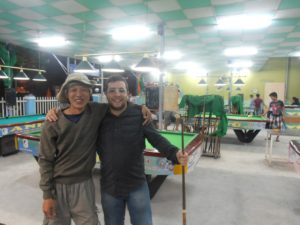
Il n’y a qu’en voulant aller voir un champ de roses et en y bloquant ta moto que tu rencontreras un paysan qui t’invitera à visiter sa maison et à goûter les fruits de son verger.
Et puis surtout il n’y a que de cette façon que tu finiras par faire une partie de billard avec un mécano qui refuse que tu le paies et qui préfère t’affronter à son jeu préféré.
3 semaines plus tard j’ai revendu ma moto au même prix à un autre voyageur. Avant de venir au Vietnam, je n’avais jamais conduit de moto.
En 2017, je suis revenu vivre la même aventure et si toi aussi l’aventure te tente, j’ai écrit un guide complet à ce sujet :
Où me nourrir ?
La plupart des auberges de jeunesse et des hôtels proposent un petit déjeuner inclus.
Si ce n’est pas le cas tu trouveras dans la rue des marchands de sandwichs. Ce sont des baguettes dans lesquelles tu peux mettre toutes sortes de légumes et de charcuterie. Ils coûtent 10 000 VND (0,35€) l’unité.
La nourriture au Vietnam est bon marché, surtout la street food, tu pourras facilement manger pour 1 €. Cependant pour un occidental, les portions vietnamiennes sont peu copieuses. N’hésite pas à prendre plusieurs plats pour garder la forme !
Si tu veux être poli et ne pas manger toujours la même chose, ces éléments de vocabulaire te seront utiles :
Bonjour : Chao ong
S’il vous plait : Lam on
Merci : Cam on
Riz : co’m
Nouilles : mi
Soupe : pho
Bœuf : bo
Porc : heo
Poulet : ga
Poisson : ca
Fourchette : nia
Où retirer de l’argent ?
La monnaie au Vietnam est le Dong. En novembre 2017 1 €= 25 000 Dongs.
Il est inutile de prendre des dollars, tu ne pourras payer que ton visa et certaines auberges.
Pour ce qui est des Dongs, tu peux en retirer partout.
A chaque retrait la banque dans laquelle tu retires tes sous, ainsi que ta banque en France, te prennent une commission.
Dois-je acheter une carte sim ?
Oui, une puce avec un crédit de la 3g te coutera 100 000 VND. Tu pourras communiquer avec tes amis et ta famille, accéder à la 3g et utiliser des applications en ligne.
En arrivant à l’aéroport et un peu partout en ville, tu trouveras facilement des cartes sims. Si tu souhaites en acheter une, assures-toi que ton mobile est débloqué.
Tu as le choix entre plusieurs opérateurs : Viettel Mobile, MobiFone et Vinaphone.
Une puce avec un crédit de la 3g te coutera 100 000 VND.
Quelles applications installer sur mon smartphone ?
Que tu es une carte sim locale ou non, tu pourras utiliser ces applications hors connexion:
Maps.me: une carte et un gps offline. Pense à télécharger la carte du pays avant ton départ ou lorsque tu as du wifi. Cette application te sers de guide mais t’indique également les hôtels et les restaurants les plus proches.
Google photos: une application qui te permet de stocker des images et de les consulter hors connexion. Télécharge des photos de tes principaux objets et lieux que tu cherches pendant un voyage.
En cas de quiproquo avec un local, montre lui la photo pour lui faire comprendre ce que tu cherches.
Xe currency: le convertisseur de monnaie, pour t’éviter de tout calculer de tête. N’oublie pas d’actualiser les devises lorsque tu as une connexion.
Si tu décides d’acheter une carte sim local, tu peux également utiliser:
Google traduction: et son option vocale, qui te permettra de faire écouter aux vietnamiens en vietnamiens, ce que tu dis.
Que contenait ton sac ?
Comme pour tout voyage, mon sac ne dépassait pas les 8kg.
A chaque fois je m’arrange pour pouvoir garder mon sac à dos en cabine. Cela me force à ce qu’il ne soit pas trop lourd et en plus ça m’évite d’avoir à l’attendre une fois arrivé à l’aéroport.
Je n’emporte pas de vêtements pour plus que 5 jours, je pense que c’est le compromis idéal pour profiter de son voyage tout en s’arrêtant et en prenant du temps pour soi.
Au Vietnam comme partout il est facile de trouver des laveries.
Voici le contenu de mon sac/
Sac décathlon Forclaz 60 :
sac à dos (pour la journée)
ceinture cache billet
jean (pour rouler à moto)
short
2 shorts de bain
6 caleçons
paires de chaussettes
3 chemises décathlon
4t shirts
débardeurs
cadenas
lampe frontale
sweat à capuche
coupe vent
sac étanche
brosse à dent
dentifrice
appareil photo
caméscope
adapter USB courant
Bob
lunettes de soleil
paire de chaussures en tissu
chaussures en cuir
tong
serviette microfibre
sac de couchage
hamac
Peut-on voyager avec un budget routard ?
Oui, le Vietnam est un pays très bon marché. Lors de mes 2 derniers voyages j’ai dépensé: 1264 € billet d’avion inclut pour 3 semaines en 2013 et 971 € billet d’avion inclut pour 15 jours en 2017.
Soit une fois les billets d’avion payé environ 200 € par semaine, en voyageant à moto.
Une chambre d’hôtel: entre 3 € et 10 €
Un repas: entre 1 € et 3 €
Une bière: entre 0.03 € (oui 3 cent) et 1 €
Un open bus ticket: 40 € pour traverser le pays.
L’essence pour traverser le pays à moto : 50 €
Une moto : 200 € que tu peux revendre au même prix.
Au Vietnam il est possible pour les occidentaux de travailler en tant que « Westerner ».
Dans les grandes villes touristiques, les bars et les restaurants à backapackers recrutent des « Westerner » afin d’attirer la clientèle occidentale dans leur établissement.
Ainsi j’ai pu rencontrer différents voyageurs (dont un français à l’anglais encore plus restreint que son budget) qui étaient logés et nourris, en échange de quoi, il devait attirer des backpackers dans leur établissement.
Pour un voyageur au budget limité, c’est un bon plan, assez facile à trouver.
Que faut-il emmener au Vietnam ?
Le guide du routard Vietnam : C’est un guide complet avec plein d’informations intéressantes sur l’histoire et la culture du pays. Il y a de très bons plans pour trouver des logements dans tous les coins du pays.
Une ceinture cache billet: Je voyage toujours avec, c’est une ceinture qui a l’air normale mais elle permet de cacher 20 billets à l’intérieur. C’est le meilleur moyen de dissimuler ton argent.
Une serviette microfibre : Les serviettes microfibre séches ultra rapidement, elles sont petites, légères et ultra-absorbantes. C’est beaucoup plus sain pour la peau que les serviettes prêtées dans les auberges.
Un Hamac : Depuis quelques temps je voyage toujours avec mon hamac. C’est très pratique, ça se transporte facilement et ça permet de dormir ou de faire une sieste n’importe où. Le mien est équipé d’une moustiquaire pour être vraiment tranquille.
Quelles sont les phrases de bases à connaître ?
Si tu veux communiquer un minimum avec les locaux, tu peux apprendre facilement ces quelques phrases. Tu pourras échanger des politesses et avoir une interaction avec toutes les personnes que tu vas rencontrer.
Bonjour – Xin Chao
Au revoir – Tam biet
Merci – Cám on Ban
Pas de problème – Khong Van De Gi
J’aime manger – Toi Muon An
Qu’est-ce que c’est ?– cái si te nài?
Je suis désolé – Toi Sin Loi
J’ai faim – Tôi Doi
Comment vous appelez-vous ?– Tên cua ban là si
Je ne comprends pas.– Toi khong hieu
J’aime manger – Toi Muon An
Quelle est la meilleure période pour visiter le Vietnam ?
Le Vietnam est un grand pays, les conditions météo ne sont jamais les mêmes entre le nord et le sud. Il y a des périodes de mousson, de pluies et de froid. Si tu souhaites traverser tout le pays, du nord au sud, les meilleurs mois sont de septembre à décembre et mars/avril.
Si tu souhaites aller dans une région spécifique:
Nord du pays : Octobre et mai sont les mois les moins pluvieux.
Centre du pays: entre février et juillet tu éviteras les fortes pluies.
Sud du pays: de décembre à avril, c’est la saison sèche.
Quelle assurance voyage ?
Tu dois toujours partir avec une assurance lorsque tu voyages. En cas de besoin c’est bien plus simple d’avoir un professionnel à qui s’adresser, plutôt que de compter sur tes proches qui ne sont peut-être même pas au courant de ton voyage.
Surtout sans assurance, le moindre accident ou soucis de santé risque de te coûter une fortune. D’autant plus, que si tu voyages moins de 3 mois, tu peux être assuré gratuitement en obtenant un carte visa premier gratuite dans une banque en ligne.
C’est cette carte qui m’a permis de me faire rapatrier suite à mon accident au Togo.
Je t’invite d’ailleurs à lire mon article complet au sujet des assurances voyages des cartes bancaires.
Comment voyager au Vietnam de manière responsable ?
En Asie c’est très facile de te laisser entraîner à faire n’importe quoi, puisque rien n’est cher et tout semble facile. Je ne vais pas faire le donneur de leçons, j’ai été cet idiot qui boit trop et qui le lendemain part torse nu et sans casque.
Évite simplement de te comporter de manière idiote comme j’ai pu le faire et agit intelligemment. Bois et fait la fête, mais reste toujours respectueux des gens et des lieux où tu te trouves.
Enfin, porte toujours un casque, des chaussures et des vêtements (c’est plus respectueux des autres) lorsque tu roules à moto. J’ai longtemps roulé sans casque et en claquettes.
J’ai eu la chance, d’être déjà moins idiot lors de mon accident au Togo, d’avoir un casque et des chaussures fermées, ce qui m’a permis d’éviter d’avoir des blessures bien plus graves.
N’essaye pas d’être cool, essaie de rester en bonne santé, c’est plus cool.
Voilà, l’article est fini. Est-ce que cette article à répondu à toutes les questions que tu te posais ? As-tu d’autres informations ou conseils à ajouter ?
Bon voyage.


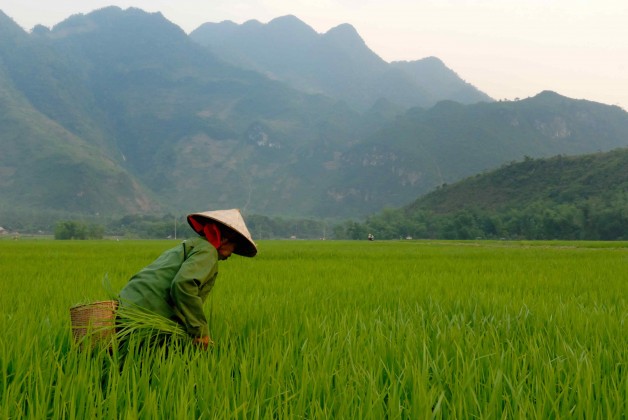

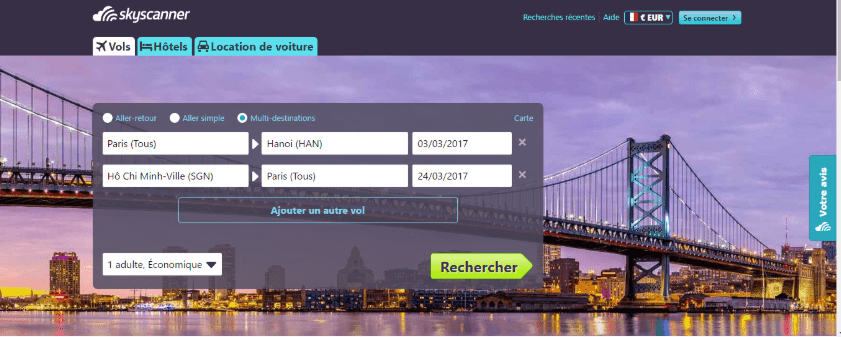
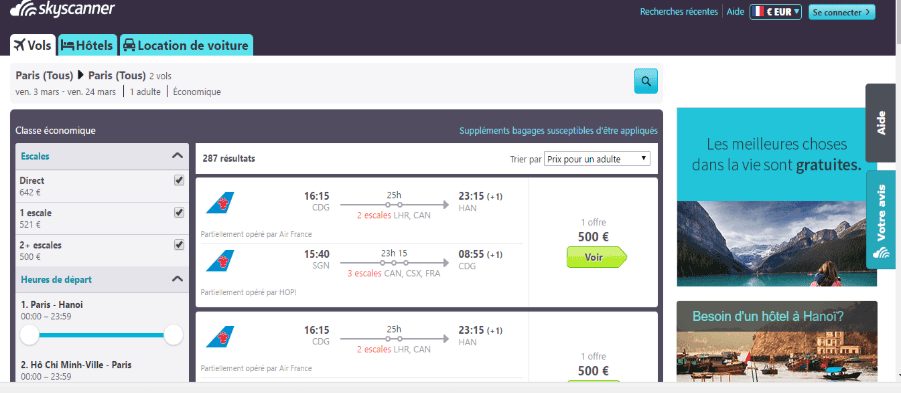
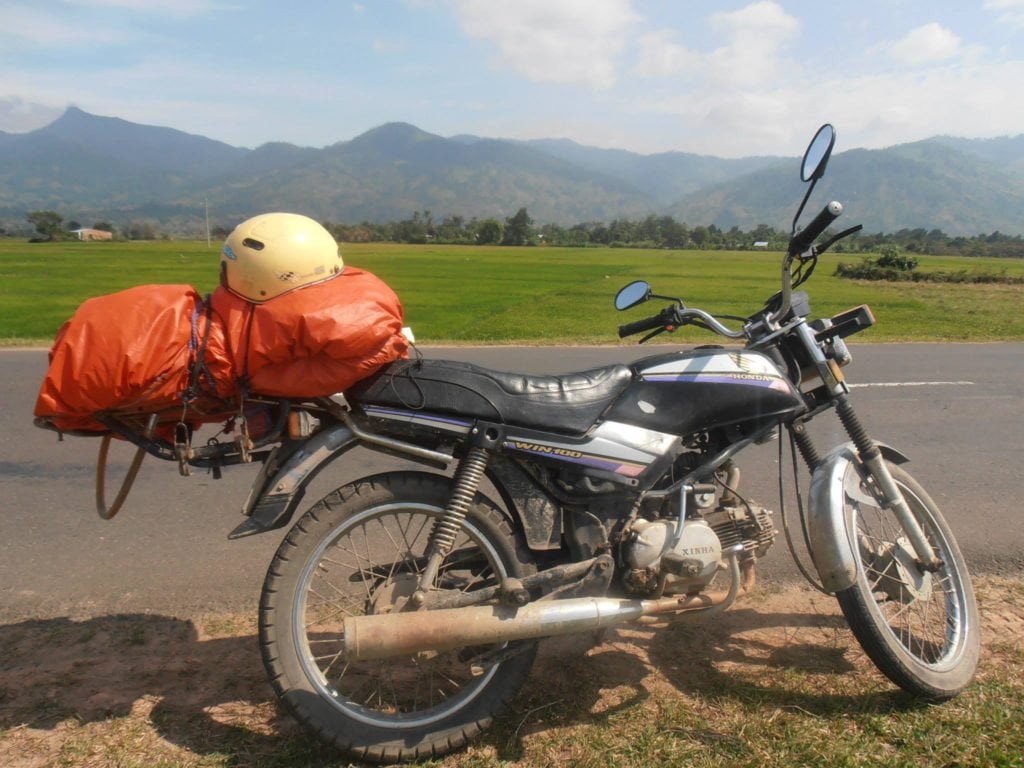
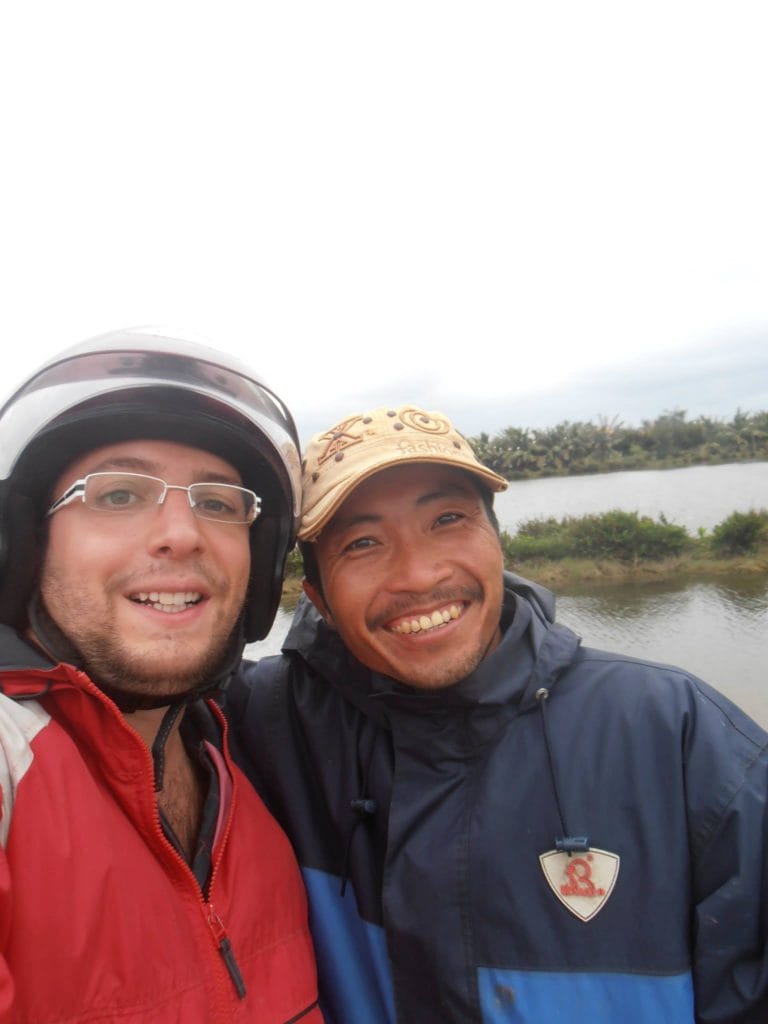
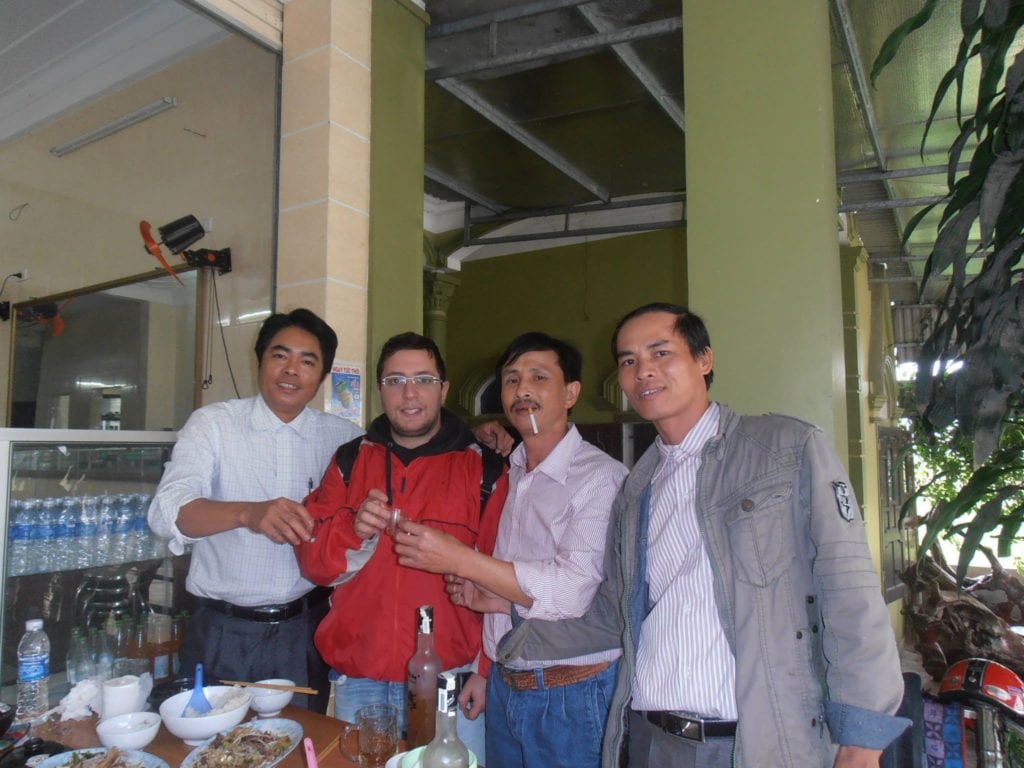
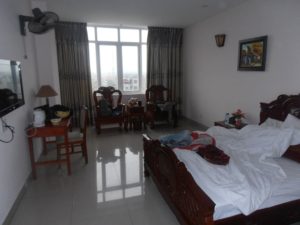


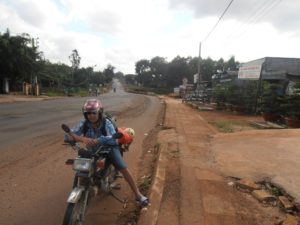

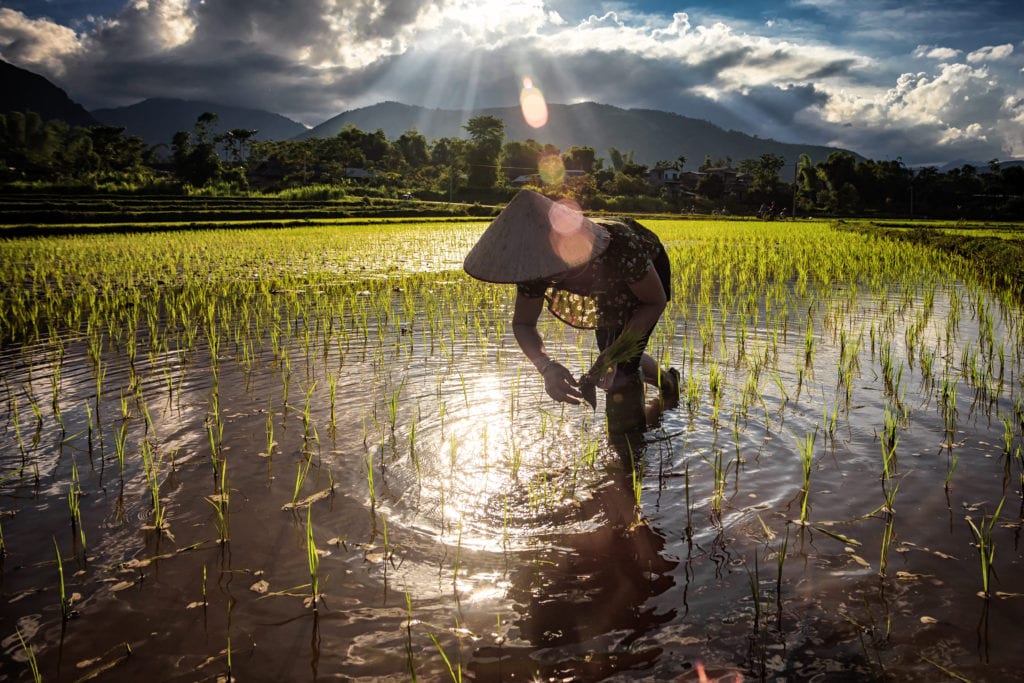

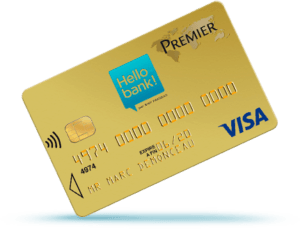
Je n’ai pas encore eu la chance de visiter le Vietnam, mais ça fait sans aucun doute partie de mes projets. Je compte m’y rendre avec mon copain dans quelques mois. Ton article va certainement nous aider.
Merci, bon voyage
Si on est à la recherche un choc culturel, je conseillerai vraiment le Vietnam. Les gens sont gentils, chaleureux et la bouffe… un vrai délice ! Sans parler des lieux qui sont plutôt inspirants, je trouve.
C’est clair, ce pays est un vrai coup de coeur
super guide, vraiment pratique !
Merci, ça fait plaisir